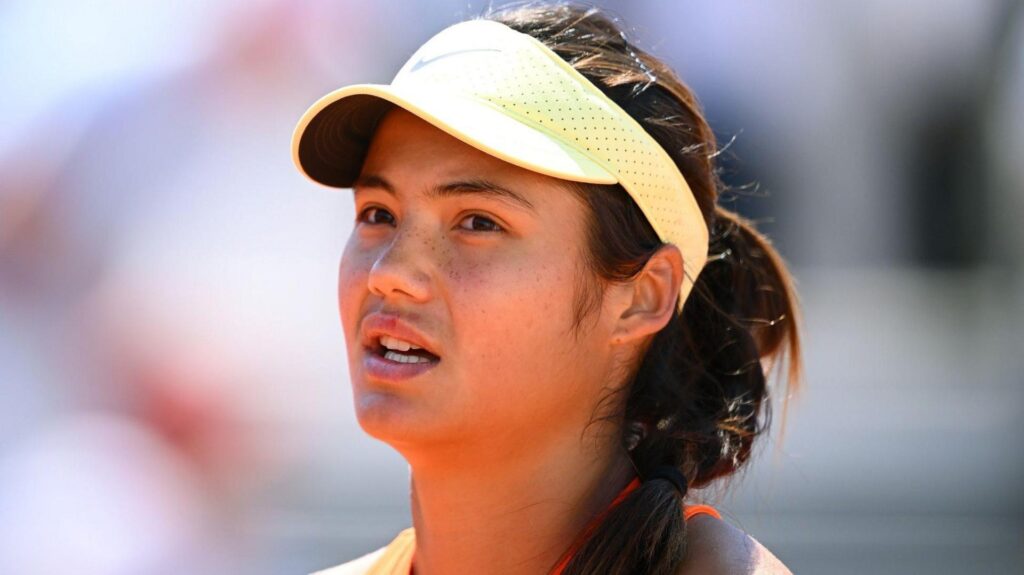Emma Raducanu’s recent match in Strasbourg against American tennis player Danielle Collins has drawn attention not only for its competitive nature but also for an injury scare the British athlete experienced. This match, which serves as a lead-up to the highly anticipated French Open, saw Raducanu competing with determination, showcasing her capability on clay surfaces after her initial success earlier in the tournament.
Initially, Raducanu demonstrated exceptional form as the match commenced, engaging in a gripping first set against Collins, a prominent competitor on the WTA Tour. The 22-year-old tennis star seemed poised to advance to her second WTA Tour quarter-final of the year, racing ahead with a notable lead. However, the affair took a rapid downturn when Raducanu faced issues with her lower back. She required a medical timeout after falling behind 5-0 in the second set, which raised concerns about her fitness just days before the commencement of the French Open.
Despite the evident discomfort, Raducanu managed to return to play after receiving treatment. There were moments where she performed commendably, even rallying to recover from a break down in the deciding set. However, Collins exhibited resilience and experience, ultimately overwhelming Raducanu with a final scoreline of 4-6, 6-1, 6-3. The result meant that Collins progressed to the quarter-finals of the tournament while Raducanu faced mixed emotions as she reflected on her performance.
Raducanu’s participation in the Strasbourg event was strategically planned to provide her with crucial match play on the clay before heading into the French Open. She had earned a wildcard entry to enhance her experience on this particular surface, an area where she has been steadily improving. Notably, her previous round saw her defeating world no. 17 Daria Kasatkina, which had built up significant expectations for her potential success going forward.
Throughout the match, Raducanu had bright spots, including a solid start that showcased her impressive baseline consistency against Collins. She effectively broke Collins’ serve early in the first set, maintaining an outstanding lead while minimizing her unforced errors. The first set concluded with Raducanu in control, highlighting her growing comfort on clay courts, a surface she has recently begun to master more effectively.
However, the dynamics shifted dramatically in the second set, where Collins capitalized on Raducanu’s struggles. This stark transition served as a reminder of the mental and physical challenges athletes face, particularly with injuries looming. Collins surged ahead, showcasing her experience by breaking serve twice without response, catalyzing a series of challenges for Raducanu that ultimately culminated in the need for a medical intervention.
In the aftermath of the match, Raducanu’s resolve remains intact. She expressed a positive outlook on the relationship she is developing with the clay surface, underscoring her ambition to build on past experiences. The next challenge for her will be the prestigious French Open, where she hopes to leverage the lessons learned from this defeat.
For Collins, her victory propels her closer to potential semi-final contests against formidable adversaries, including third seed Paula Badosa and Liudmila Samsonova. The bracket for the quarter-finals was promising, containing other notable matches, such as Emma Navarro against Beatriz Haddad Maia and fourth seed Elena Rybakina versus Poland’s Magda Linette.
Looking ahead, Raducanu’s focus now shifts towards recovery and preparation for the high-stakes environment of Roland Garros. Tennis fans will be keenly observing her journey as she seeks to further her progress on clay and ensure her fitness for the challenges that lie ahead.



